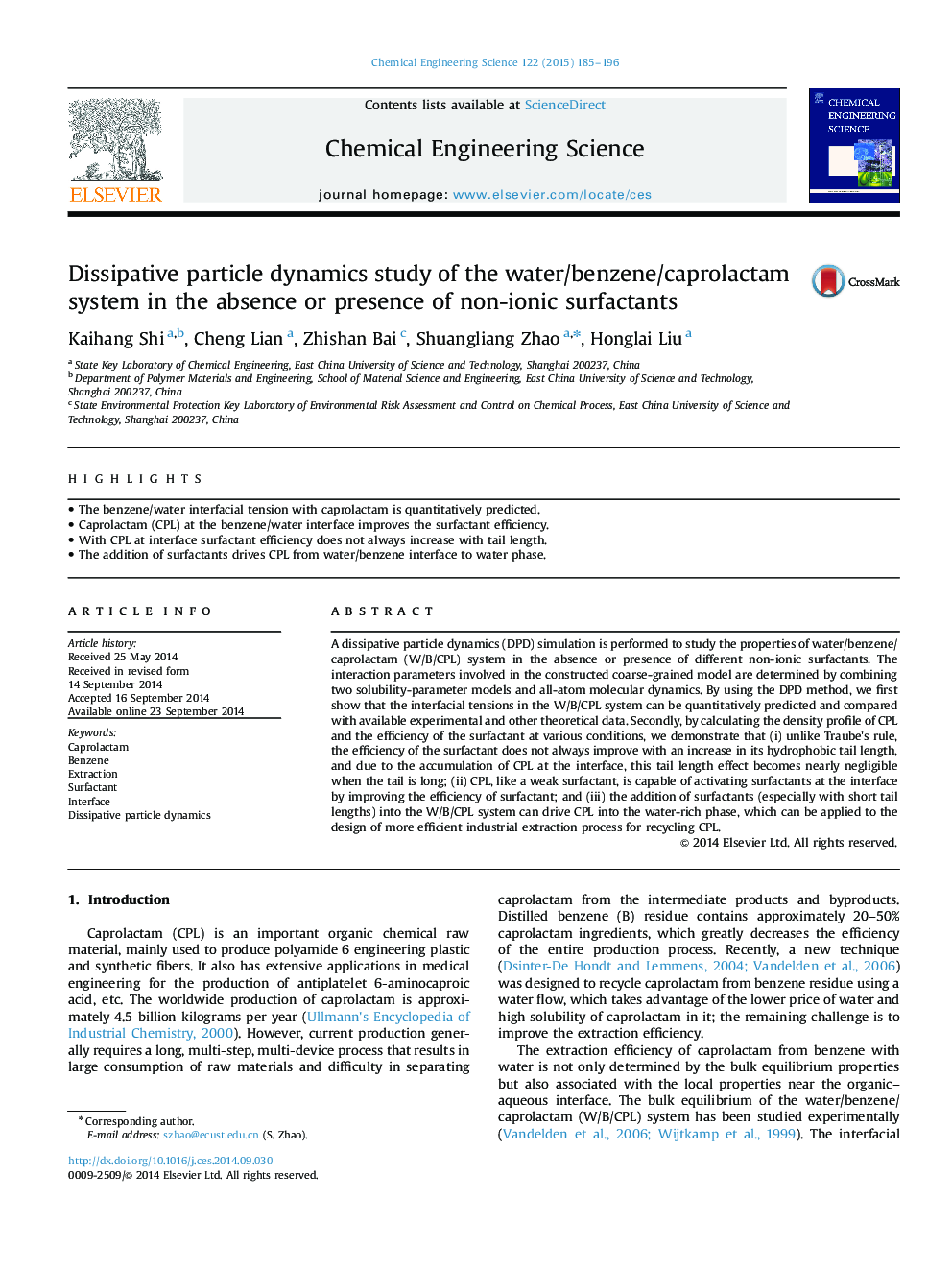| Article ID | Journal | Published Year | Pages | File Type |
|---|---|---|---|---|
| 6590717 | Chemical Engineering Science | 2015 | 12 Pages |
Abstract
A dissipative particle dynamics (DPD) simulation is performed to study the properties of water/benzene/caprolactam (W/B/CPL) system in the absence or presence of different non-ionic surfactants. The interaction parameters involved in the constructed coarse-grained model are determined by combining two solubility-parameter models and all-atom molecular dynamics. By using the DPD method, we first show that the interfacial tensions in the W/B/CPL system can be quantitatively predicted and compared with available experimental and other theoretical data. Secondly, by calculating the density profile of CPL and the efficiency of the surfactant at various conditions, we demonstrate that (i) unlike Traube׳s rule, the efficiency of the surfactant does not always improve with an increase in its hydrophobic tail length, and due to the accumulation of CPL at the interface, this tail length effect becomes nearly negligible when the tail is long; (ii) CPL, like a weak surfactant, is capable of activating surfactants at the interface by improving the efficiency of surfactant; and (iii) the addition of surfactants (especially with short tail lengths) into the W/B/CPL system can drive CPL into the water-rich phase, which can be applied to the design of more efficient industrial extraction process for recycling CPL.
Related Topics
Physical Sciences and Engineering
Chemical Engineering
Chemical Engineering (General)
Authors
Kaihang Shi, Cheng Lian, Zhishan Bai, Shuangliang Zhao, Honglai Liu,
